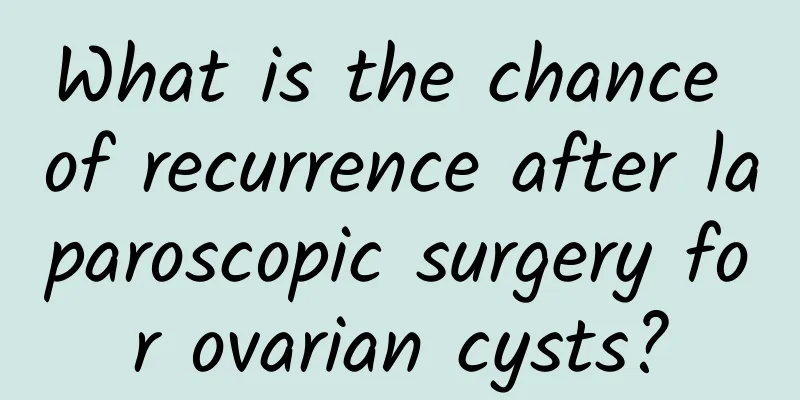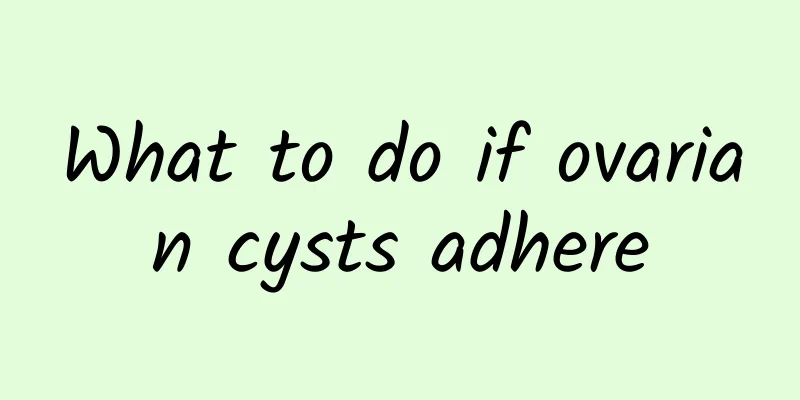Drug curettage can treat anovulatory functional uterine bleeding

|
Anovulatory functional uterine bleeding refers to irregular uterine bleeding caused by neuroendocrine system dysfunction. It is more common in adolescence and menopause and requires timely treatment. Drug curettage can treat anovulatory functional uterine bleeding. Method of curettage and dilatation for the treatment of functional uterine bleeding Medical curettage is for patients with anovulatory functional uterine bleeding who lack progesterone in their bodies, causing pathological physiological changes in the uterus. Treatment method: patients receive intramuscular injections of progesterone, 20 mg per day, for 3 days until the endometrium changes to the secretory phase, and then stop taking the drug, causing an artificial decrease in blood progesterone levels. Withdrawal bleeding may occur during treatment When curettage is used to treat functional uterine bleeding, the endometrium is regularly shed and bleeding occurs, which is called "withdrawal bleeding". This type of bleeding is similar to the amount of menstrual bleeding and lasts for about 7 days. Sometimes the amount is large and this is inevitable. Before using progesterone, the patient must be informed that the hemostatic effect will only appear after the withdrawal bleeding stops. Ways to reduce withdrawal bleeding In order to reduce the amount of withdrawal bleeding, testosterone propionate (a male hormone preparation) can be injected at the same time as progesterone is injected intramuscularly, 25-50 mg per day for 3 days. If the amount of bleeding is still large, the patient should rest in bed and take general hemostatics such as vitamin K, hemostatics, vitamin C, and hemostatic aromatic acid orally or intramuscularly. In severe cases, glucose solution and blood transfusion can be used. Estrogen and progesterone preparations should not be used during withdrawal bleeding. Tips: Medical curettage is suitable for unmarried patients with anovulatory functional uterine bleeding. |
>>: Treatment of amenorrhea caused by insufficient kidney qi and liver and kidney deficiency
Recommend
Diagnostic criteria for hyperprolactinemia
The human body is like a magical machine. When a ...
What medicine to take to treat irregular menstruation? Dietary treatment for irregular menstruation in women
Many female friends suffer from different degrees...
Is it difficult for Leos to lose weight since they love to eat big meals? If you want to lose weight successfully, start with these 3 steps
The most common stereotype about Leo friends is t...
How much does it cost to treat vaginitis?
How much does it cost to treat vaginitis? Vaginit...
4 major advantages of micro-tube painless abortion surgery
The most important thing about abortion is safety...
Will menstruation be normal after cervical adhesion surgery?
After uterine adhesion surgery, we have a lot of ...
What are the symptoms of cervical erosion?
What are the symptoms of cervical erosion? Recent...
What complications may occur?
What does artificial abortion mean? What are the ...
How is an ectopic pregnancy treated?
How is an ectopic pregnancy treated? Ectopic preg...
What tests can be used to detect hyperprolactinemia?
What tests can be used to rule out hyperprolactin...
What should pregnant women do if they have uterine fibroids? Is surgery necessary for uterine fibroids?
Pregnancy is a happy thing in a woman's life,...
Detailed explanation of the harm caused by cervical erosion
If you have cervical erosion, you must seek timel...
Cervical hypertrophy basically has symptoms of acute inflammation
Cervical hypertrophy basically presents symptoms ...
How to treat chronic cervicitis? 5 methods can effectively prevent chronic cervicitis
Can I take amoxicillin to reduce inflammation in ...
What medicine can completely cure pelvic peritonitis?
my country's traditional Chinese medicine cul...









